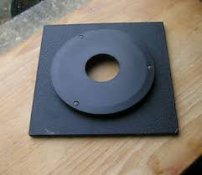campy51
Subscriber
I picked up a Nikkor-W 135mm lens and want to replace the Xenar 135mm that came with it. The Xenar rangefinder and gg matched but with the Nikkor the focus is way off when lens board is set to the rail stops. Playing around with it I set the focus rail to 6 feet and set a target to 6 ft. and pulled the lens out until it was focused on the gg and the rangefinder seemed to match. I guess my question is if I move the bed stops to the new position is the camera set up to use the rangefinder cam from the Xenar? Was my method all wrong since I didn't use infinity? I should probably also ask if the Nikkor would give better results than the Xenar. Not that I was unhappy with the Xenar but bought a Nikkor-W 135 and a Fujinon-W 210 at a decent price.




